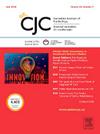不同年龄组的孤立手术主动脉瓣置换术后长期存活率降低的风险因素。
IF 5.3
2区 医学
Q1 CARDIAC & CARDIOVASCULAR SYSTEMS
引用次数: 0
摘要
背景:根据最新指南,低风险患者选择经导管主动脉瓣置换术(TAVR)还是手术主动脉瓣置换术(SAVR)取决于年龄和预期寿命。我们的目的是了解孤立 SAVR 术后预期寿命缩短的独立风险因素以及不同年龄组主动脉瓣(AV)介入术的重做率,从而根据患者的特点划定最佳介入方案:2000-2015年间,2026名患者接受了使用Edwards心包组织瓣膜的孤立性SAVR手术。采用多变量模型确定了三个年龄组长期生存的独立风险因素:结果:第一组(年龄)、第二组(年龄)和第三组(年龄)的10年生存率分别为83.4±2.3%、72.7±2.6%和39.8±3.0%:我们发现了不同年龄组进行孤立 SAVR 术后长期生存率降低的风险因素,而 PH 是所有年龄组中唯一的风险因素,这应有助于 SAVR 与 TAVR 的决策。鉴于再次进行房室介入手术的比例极低,我们的研究结果也支持目前对年龄大于 65 岁的患者使用生物前列腺假体的建议。本文章由计算机程序翻译,如有差异,请以英文原文为准。

Risk Factors for Reduced Long-Term Survival Following Isolated Surgical Aortic Valve Replacement in Different Age Groups
Background
According to recent guidelines, the selection of transcatheter vs surgical aortic valve replacement (TAVR vs SAVR) in low-risk patients depends on age and life expectancy. Our objective was to understand independent risk factors for reduced life expectancy following isolated SAVR and the rate of redo aortic valve (AV) intervention in different age groups, to delineate optimal intervention depending on patient characteristics.
Methods
Between 2000 and 2015, 2026 patients underwent isolated SAVR with Carpentier-Edwards pericardial tissue valves (Edwards Lifesciences, Irvine, CA). Multivariable models were conducted to determine independent risk factors for long-term survival in 3 age groups.
Results
The 10-year survival rates were 83.4 ± 2.3%, 72.7 ± 2.6%, and 39.8 ± 3.0% in Group I (age < 65 years, n = 577), II (age 65 to < 75 years, n = 693), and III (age ≥ 75 years, n = 756), respectively. Independent factors for the reduced long-term survival were pulmonary hypertension (PH), renal failure, peripheral vascular disease, diabetes, and New York Heart Association (NYHA) class IV in Group I; PH, diabetes, current smoking, and atrial arrhythmia in Group II; and PH, anemia, and NYHA class IV in Group III. The redo AV intervention rate at 10 years was much higher in Group I than in Groups II and III (14.7 ± 2.5% vs 3.4 ± 1.1% and 0.8 ± 0.4%, P < 0.001).
Conclusions
We identified risk factors for reduced long-term survival following isolated SAVR in different age groups and PH being the only risk factor across all ages, which should assist in decision making for SAVR vs TAVR. Our results also support the current recommendation of bioprostheses in patients aged > 65 years, given extremely low rates of redo AV intervention.
求助全文
通过发布文献求助,成功后即可免费获取论文全文。
去求助
来源期刊

Canadian Journal of Cardiology
医学-心血管系统
CiteScore
9.20
自引率
8.10%
发文量
546
审稿时长
32 days
期刊介绍:
The Canadian Journal of Cardiology (CJC) is the official journal of the Canadian Cardiovascular Society (CCS). The CJC is a vehicle for the international dissemination of new knowledge in cardiology and cardiovascular science, particularly serving as the major venue for Canadian cardiovascular medicine.
 求助内容:
求助内容: 应助结果提醒方式:
应助结果提醒方式:


